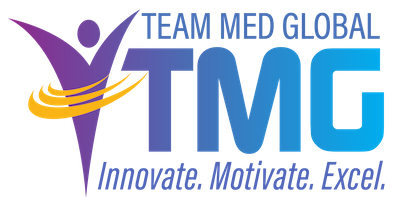 In a world increasingly driven by innovation and ever-evolving challenges, creativity is no longer a trait exclusive to artists, designers, or writers. It is an essential skill for any MSP, and is a key driver of personal effectiveness in TMG’s EMSP Core Competency Model. As MSPs, we have a unique opportunity to infuse creativity into our work and contribute to improved efficiency, patient safety, and reimbursements.
In a world increasingly driven by innovation and ever-evolving challenges, creativity is no longer a trait exclusive to artists, designers, or writers. It is an essential skill for any MSP, and is a key driver of personal effectiveness in TMG’s EMSP Core Competency Model. As MSPs, we have a unique opportunity to infuse creativity into our work and contribute to improved efficiency, patient safety, and reimbursements.
Here are 9 ways for MSP leaders to foster creativity:
- Redefining Creativity: Creativity isn’t just about art or design; it’s about approaching tasks with fresh perspectives, finding novel solutions, and thinking outside the box. As MSPs, we can creatively streamline workflows and find innovative methods to enhance the efficiency of Medical Staff Services.
- A Culture of Innovation: Creating a culture that values and encourages creative thinking is vital. Leaders can set the tone by supporting experimentation, acknowledging new ideas, and allowing MSPs to take calculated risks. Feeling safe to share our creative thoughts leads to ownership and engagement.
- Cross-Functional Collaboration: Creativity thrives in diverse environments. Encourage cross-functional collaboration to brainstorm ideas and develop creative solutions to common challenges faced by both groups. Different perspectives can lead to innovative solutions that might not be apparent within siloed teams.
- Continuous Learning and Development: Offering training and development opportunities that nurture creativity is crucial. Workshops on creative problem-solving, project management, and communication skills contribute to our ability to think creatively, and provide us with the tools and mindset needed to approach our tasks with a creative edge.
- Time for Reflection: Creativity often flourishes when we have time to think, ponder, and reflect. Encourage breaks, downtime, and even meditation sessions to allow for mental space where creative ideas can incubate.
- Incentives and Recognition: Implement incentive programs and recognition systems that reward creative contributions. Acknowledging and rewarding innovative ideas can boost morale and motivate MSPs to actively seek out creative solutions to everyday challenges.
- Embracing Failure as Growth: Creativity often involves taking calculated risks, which may sometimes lead to failures. Encourage staff to view these failures as opportunities for growth and learning, rather than setbacks. A culture that accepts failure as a stepping stone to success fosters risk-taking and innovation.
- Innovation Committees: Establish innovation committees or teams within the organization. These teams can be responsible for identifying areas that need creative solutions and driving innovation. They can act as champions for creativity and drive change from within.
- Feedback Loops: Create feedback mechanisms that allow MSPs to receive input on their creative ideas. Constructive feedback can help refine and improve ideas, making them more viable and impactful.
Creativity is not confined to specific job titles or roles; it’s a mindset that can be cultivated and harnessed throughout Medical Staff Services. When organizations cultivate creativity in Medical Staff Services, they open the door to innovation and adaptability. By fostering a culture of innovation, providing training and development opportunities, and recognizing and celebrating creative contributions, healthcare organizations can empower MSPs to excel creatively and drive positive changes that benefit both the organization and the patients it serves.
